 Eighteen community groups have been selected to receive funding to support community engagement with the county’s plan to reach a zero-waste future. These groups will be responsible for providing input on engagement plans for their communities, hosting engagement sessions, and communicating updates to their members on the process and feedback opportunities. As a cohort, these groups will work together to gain a broader understanding of the solid waste system, develop community-identified solutions, and define themes for use in the subsequent plan development phase.
- Action to Equity
- Audubon Neighborhood Association
- Center for Hmong Arts and Talent
- Climate Generation/Youth Environmental Activists of Minnesota (YEA! MN)
- Community Power
- Congregations Caring for Creation
- Eastside Neighborhood Services
- Ebenezer Oromo Evangelical Church
- Encouraging Leaders
- Lao Assistance Center of Minnesota
- McKinley Community
- MN Renewable Now
- NoMi Roots
- Northside Residents Redevelopment Council
- Off The Blue Couch
- Somali American Women Action Center
- Resilient Cities and Communities with Inquilinxs Unidxs por Justicia
- Thai Cultural Council of Minnesota
Subscribe to the Zero Waste Plan Updates newsletter to receive updates as the plan moves forward.
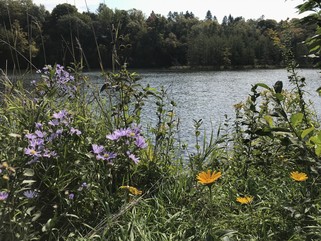
Despite the winter’s cold and snow, development work is heating up as county staff continue meeting with partners and the public to discuss future priorities in our next Natural Resources Strategic Plan.
Following completion of our first phase of public outreach, staff have continued outreach over the winter focused on listening and learning from a more diverse set of voices, including meetings with both Southside and Northside Green Zone Task Forces in Minneapolis and with different youth groups.
County staff hosted our first two Collaboration Group meetings with key public entity partners. Participating external partners included those managing natural resources, water resources, and parks and trails in diverse geographies across the county. Internal collaboration partners spanned from those with clear intersections with environmental protection such as Transportation and Facility Services, to those with emerging roles, including the new Climate and Resiliency Department. For partners not actively involved in these collaboration groups, there will continue to be plenty of opportunities to provide input and engage in plan development. The best way to learn about those opportunities is to sign up to receive updates here.
Both internal and external partners suggested the county could play a larger role in natural and water resource protection, building off historic and recent successes working directly with or supporting partners and in interacting with communities and residents in the county’s role as a Soil and Water Conservation District. Collaboration partners see the county playing a crucial role in connecting partners and bridging gaps across borders and jurisdictions. Continuing and expanding this role is key to success on more challenging projects and focus areas, such as mitigating climate change and advancing environmental justice.
Staff are using these learnings to begin development of plan goals and strategies on topics identified during the first phase of the plan development, focusing on natural features and concerns most critical to residents: Wildlife & Habitat, Hydrogeology, Surface Waters, Urban Ecosystems, and Rural Ecosystems. Staff work groups were developed comprising subject matter experts in each of these areas and work is ongoing to develop a plan framework from these discussions. Staff anticipate having a draft framework by late spring, with the next phase of public outreach planned this summer to receive feedback on that framework.
Continue to look for updates in Green Notes and on our project website. Please also sign up for email updates to stay informed and learn about opportunities to provide feedback..
|
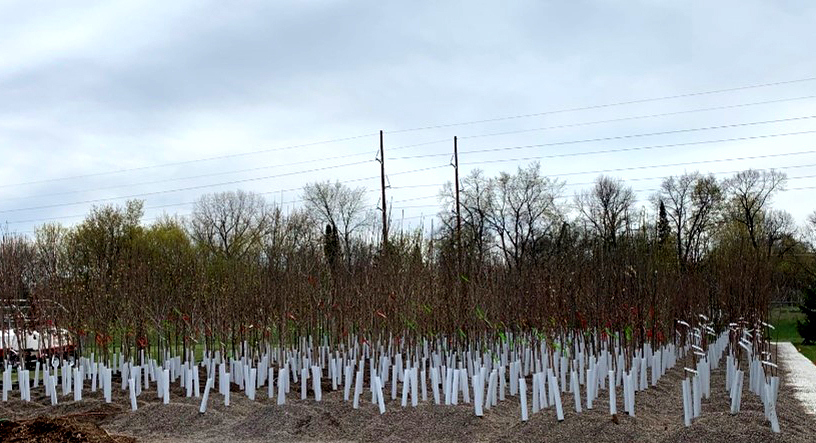
Creating a community forestry program was part of the county’s expanded role in natural resource conservation and is a core component of the county’s efforts to combat climate change. The forestry program focuses on protecting the county’s tree canopy to increase the benefits that trees provide. Trees improve air quality by absorbing fine particulate matter and other pollutants and protect water by slowing down and infiltrating stormwater runoff. They also provide shade, reduce the urban heat island effect, lower stress, and increase property values.
Aspects of the county’s forestry program include growing healthy trees, partnering in large-scale planting events, managing threats to the tree canopy, raising awareness about tree pests and disease, educating the public on the benefits of trees, and supporting partners through the Healthy Tree Canopy Grant program.
Hennepin County foresters were busy throughout 2021. Some highlights of the work that was accomplished include:
- Awarded 21 Healthy Tree Canopy grants totaling about $404,000. Grant projects will take place in nine cities, on 10 affordable housing properties, at four schools, and through five nonprofit organizations, including congregations and neighborhood associations. More than 1,000 trees will be planted through the grant projects.
- Planted 570 gravel bed trees and shrubs throughout the county
- Held a tree sale where residents purchased over 2,000 seedlings
- Continued to update inventory of ash trees on county property
- Conducted an inventory of diseased trees within rights-of-way along county roads
Learn more in the 2021 Community forestry annual report (PDF).
|
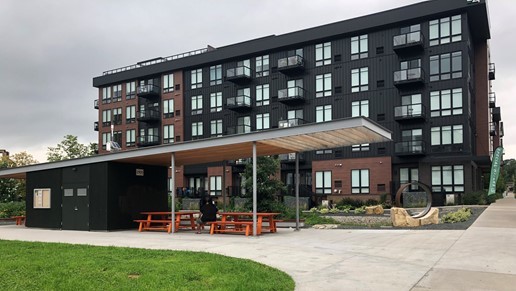
ERF applications are open now for the Spring 2022 grant round
Applications are due by May 2, 2022, at 3 p.m.
Prior to applying for an ERF grant, contact brownfields@hennepin.us to discuss your project and funding needs.
Application materials will be available through the Supplier Portal.
Questions? Visit Hennepin.us/brownfields
Projects receive funding to clean up contaminated sites
In February 2022, Hennepin County awarded 9 ERF grants totaling $2,053,226. The grants will fund asbestos and lead-based paint abatement, vapor mitigation, and contaminated soil assessment and cleanup.
Environmental Response Fund (ERF) grants are used to fund the assessment and cleanup of contaminated sites in Hennepin County. Since ERF funding began in 2001, 425 grants totaling $60.7 million have been awarded.
The improved properties benefit us all by:
- Increasing the tax base
- Enhancing green space
- Keeping the community in place to enjoy the improvements
- Creating permanent jobs
- Creating affordable and moderately priced market-rate housing
Learn more about the grants awarded
|

The Minnesota Department of Natural Resources has launched the next phase of their No Child Left Inside grant program to help get more students outdoors to learn how to be good stewards of Minnesota’s natural resources. These grants will help children begin a lifetime of outdoor experiences including learning how to cast a line, study animal tracks, hike or bike, or simply experience more of the natural world around them.
The No Child Left Inside grants are now open for applications. Public entities and nonprofit organizations serving youth under age 18 can apply for up to $25,000. Applications must be received by 2 p.m. on Thursday, March 10.
Learn more and apply.
|

Requirement for cities to offer organics recycling service for residents
A Star Tribune article recently covered the requirement for cities to offer organics recycling service for residents.
The ordinance offers flexibility in how cities meet the requirement so they can develop an approach based on the needs of their community. Cities may contract for citywide service or require haulers to provide the service.
The ordinance does not require cities or haulers to charge all residents for organics recycling nor does it require residents to participate in organics recycling.
More information about organics recycling including requirements, materials accepted, benefits, and city programs is available at hennepin.us/organics.
|
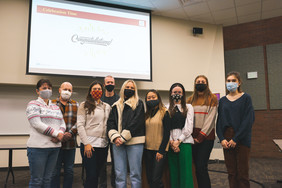
University of Minnesota students develop strategies for Choose to Reuse
This past fall, University of Minnesota retail merchandising students researched solutions for helping consumers prioritize reuse over purchasing new. They partnered with Hennepin County's Choose to Reuse program to envision marketing and branding ideas to refresh outreach efforts.
Learn more: The College of Design: Helping County Residents and Retailers Choose to Reuse.
|
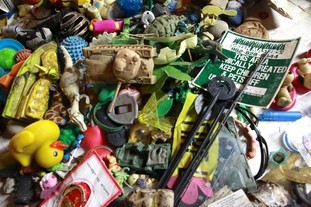
Plastics are common due to their low cost, light weight, and utility. More than one-third of plastics are used for packaging, including food packaging, grocery bags, and straws. Plastic use has increased twenty times since the 1960s and will continue if changes aren’t made.
The amount of plastic we use is problematic because:
- Most plastics are made from oil. About 4% to 8% of the world's oil product is for plastics, and most plastics are thrown away after a single use.
- Plastics collect in our lakes and rivers and break down into micro and nanoplastics. These are threats for birds and wildlife and have known and unknown concerns for human health.
- Micro and nanoplastics have been found in our soil, water, and food. About 60% of microplastics come from high-income countries in the form of tire dust, pellets, textiles, and personal care products.
Hennepin County’s single-use plastics reduction campaign
Hennepin County is providing incentives for an innovative waste project. We are contracting with Minnesota Waste Wise Foundation to create a single-use plastics reduction campaign for restaurants and foodservice businesses.
Single-use plastic products used in restaurants and foodservice businesses—like bags, utensils, straws, cups and lids, and to-go containers—are a challenge for residents to properly dispose of due to confusion over which can be recycled, composted, or put in the trash. This project aligns with both the county's Climate Action Plan and our work to develop an operational plan for a zero-waste future where 90% of all discarded materials are diverted from landfills and incinerators.
The campaign will be developed in 2022 and will be live 2023-2025. At least 100 restaurants and foodservice businesses will participate in this initiative.
Learn more
|

Celebrating the impact of Plastic-Free Challenge participants
With all the plastic in the world, one has to wonder how our individual actions matter. But when taken together, our actions to reduce our own plastic use can have a significant collective impact! Nearly 1,100 people participated in Hennepin County’s Plastic-Free Challenge in the month of February and their efforts showed big results!
Together, participants completed 7,000 actions to reduce their reliance on plastics. Impacts of these actions include preventing over 4,000 pounds of carbon dioxide emissions, picking up over 1,300 pieces of litter, preventing over 4,500 plastic straws, cups, cutlery, and bottles from being trashed, preventing over 2,000 pounds of plastic packaging waste, and spending more than 6,000 minutes learning how to live a low-waste lifestyle.
Working to reduce the plastic in your life is a difficult and ongoing process. It is important to celebrate your successes, no matter how small! Each win can help motivate you to make the next, and together our impacts add up.
Easy tips to use less plastic and create less waste
There are many different actions you can take to move closer to a plastic-free lifestyle. Some actions that participants took to have a big impact during the challenge include:
- Educating yourself by watching a documentary or estimating your plastic footprint.
- Eliminating plastic items by making swaps. Some common swaps including getting rid of disposable cleaning wipes, dryer sheets, plastic baggies, and plastic wrap. Participants also made the switch to compostable floss, chose natural fiber clothing, and used reusable containers for snacks and for freezing food.
- Making your own items to avoid plastic packaging, such as by canning or pickling, baking granola bars or bread, or preparing green cleaners.
- Increasing recycling of plastic caps and bags and picking up litter.
- Changing how you shop by shopping at used goods stores, using reusable bags, shopping the bulk bins, avoiding harmful plastics, and buying unpackaged produce.
- Changing how you do things, such as cooking meals with zero plastic waste, planning a garden, and extending the life of electronics.
Participate in future challenges
The Plastic-Free Challenge runs through February 28, but there will be more opportunities to stay involved! Check out our Zero Waste Challenge webpage for information on what is coming up.
About Green Notes
GreenNotes covers environmental news, programs and events from Hennepin County.
Please take a few moments to read our stories. Share your feedback and ideas for protecting the environment.
|